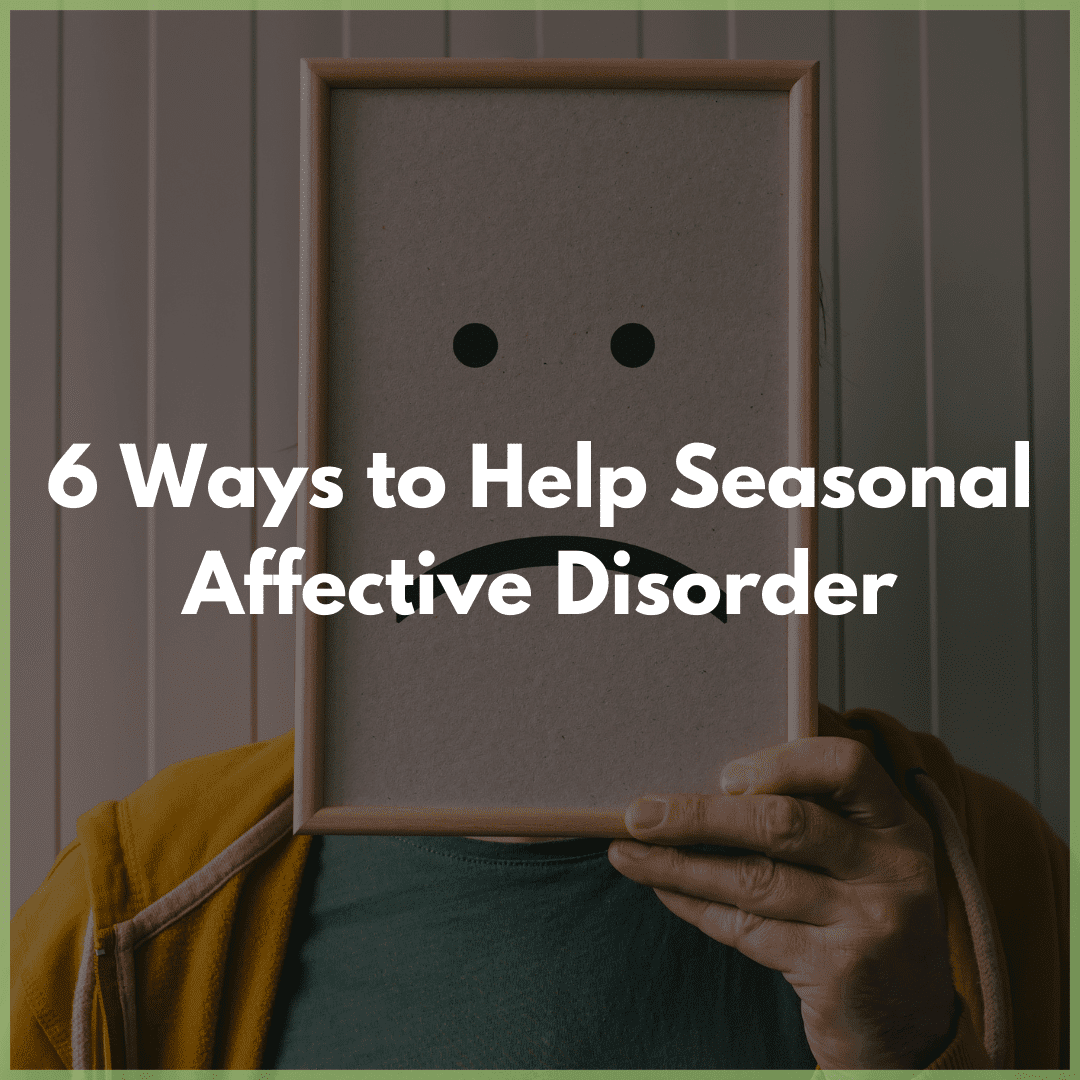
Seasonal affective disorder (SAD) is a type of depression that happens during the darker months of the year, and managing it is key to mental wellbeing and overall quality of life.
In this post, you’ll find 6 ways to help seasonal affective disorder and your mental health during the winter months.
Key Points
- Maximise sunlight and stay active to manage SAD.
- Use light therapy, eat a balanced diet with vitamin D supplements and social connections for extra support.
- Consider CBD Oil for general well-being.
Maximise Sunlight
Seasonal affective disorder is often linked to the decrease in daylight hours, especially during autumn and winter.
Increasing your natural sunlight can play a big role in managing SAD and mental wellbeing. So how can you increase your sunlight during the darker months?
Keep curtains and blinds open at home to let in as much natural light as possible. Make sure windows are clear of any obstructions that may block the light.
Spend as much time as possible outside in the daylight, such as going for a walk during the peak sunlight hours, to increase your natural light.
At work, if possible, sit by a window and make a conscious effort to look outside towards the brighter light.
Doing this in your daily routine can help you manage SAD, your mental wellbeing, and sustain a positive mood during the winter months and beat the winter blues.
Stay Active and Exercise
Exercise has been shown to have many benefits for mental health such as:
- Releasing endorphins which can lift your mood and reduce stress and anxiety
- Improving mental wellbeing and reducing symptoms of depression and anxiety
- Increasing natural sunlight which can have a positive impact on mood and other mental health conditions
The benefits of exercise for mental health can normally be noticed within a few weeks. Outdoor exercise can be especially beneficial for mental well-being.
Keeping a consistent sleep-wake cycle also plays a big role in regulating your natural circadian rhythms and overall mental health. Combining outdoor exercise with a steady sleep-wake cycle can help you manage your SAD and keep a positive mood during the winter season.
Light Therapy
Light therapy is a popular and effective treatment for seasonal affective disorder. It involves using a special light box to simulate sunlight, which can help regulate hormone levels and improve mood in people with SAD.
The reduced light during the darker days can disrupt the body’s circadian rhythm and affect the brain areas responsible for producing mood-regulating hormones such as serotonin and melatonin.
To benefit from light therapy:
- Sit in front of a bright light therapy box for 20-30 minutes daily
- Preferably, do this within the first hour after waking up in the morning
- This will help you maintain your circadian rhythm and feel well during the winter months.
But don’t use a very bright light therapy box in the evening, as this can disrupt your sleep patterns by making your brain think it’s daytime.
Before buying a light box, consult with your healthcare provider to ensure you’re getting the right one for your needs. Make sure the light box is specifically designed and medically approved for SAD.
With correct usage, light therapy can be a useful tool in managing your seasonal affective disorder and sustaining a positive mood during the winter months.
Eat a Balanced Diet and Supplement with Vitamin D
Eating a balanced diet is good for your physical health, but also plays a big role in supporting your mental health and reducing SAD symptoms.
Research has shown a link between low vitamin D levels and seasonal affective disorder. During the winter months, when sunlight is limited, it’s especially important to watch your vitamin D intake.
Beyond sunlight exposure, you can increase your body’s vitamin D supply by including certain foods in your diet, such as fatty fish, egg yolks and fortified dairy products.
Vitamin D supplements can also be a helpful addition to your diet, especially during the darker months when natural sunlight is scarce. Consult your healthcare provider before taking any supplements to ensure they are safe and suitable for you.
Eating a balanced diet and supplementing with vitamin D can support your mental health, reduce SAD symptoms, and help you sustain a positive mood during the winter season.
Build Social Connections and Support Networks
Building and maintaining social connections and support networks is key to managing seasonal affective disorder (SAD) and seasonal depression.
Social isolation has been linked to depression and post-traumatic stress disorder so social activities are crucial for people with SAD.
Social connections can give you a sense of belonging and reduce feelings of loneliness. During the winter months, staying in touch with friends and family is important. Use technology like FaceTime and Zoom calls to stay in touch with loved ones.
In addition to staying connected virtually, consider joining group activities, hobbies or volunteering opportunities to build social connections and support networks in person.
Building social connections and support networks can help you fight feelings of isolation and loneliness that can exacerbate SAD symptoms and help you sustain a positive mood during the winter season.
Support Your Well-Being With CBD Oil
Incorporating CBD oil into your self-care routine may add extra support for the mental well-being of people with SAD.
CBD oil is derived from the cannabis plant, and its main component is cannabidiol (CBD), has been researched for its potential health benefits, such as:
- Reducing inflammation
- Relieving pain
- Reducing anxiety and stress
- Improving sleep quality
- Enhancing mood
More research is needed to confirm its effectiveness, but full spectrum cannabidiol oils are generally considered safe.
However, it may interact with certain medications and cause side effects such as drowsiness, dry mouth and low blood pressure. Consult with a doctor before you buy CBD oil .
Summary
In short, managing SAD is key to mental health and overall well-being during winter. Get more sunlight, stay active, do light therapy, eat a balanced diet with vitamin D supplements, stay social and add CBD oil to your self-care routine, and you’ll hopefully be managing your SAD symptoms and feeling positive all winter.
Thanks for reading! If you are interested in discovering our range of high efficacy CBD products, such as transdermal CBD patches, click the shop now button at the top of your screen.
Frequently Asked Questions
Get natural sunlight, create a light-filled home and exercise regularly to help with SAD symptoms.
SAD is a form of depression that occurs during the fall and winter months when there is less sunlight.
Exercise can improve mood and stress within a few weeks, so it’s a great way to manage SAD symptoms.
